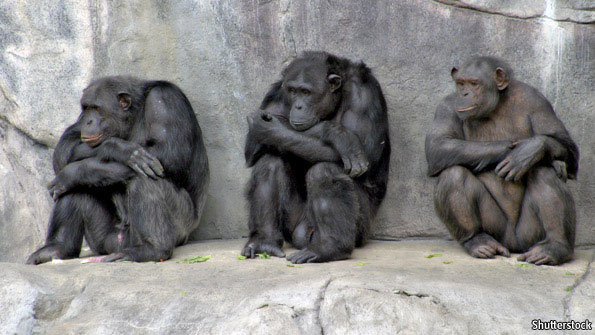How to make zoos happier places
Zoos are better places for animals than they used to be. But more still needs to be done

In this edition of our series on the animal world, we revisit an article from 2010 that examined ways to keep animals in zoos happy
Once, they were grim places of bars and concrete. But zoos today are, more often than not, places where endangered species are bred in verdant and naturalistic enclosures. At least, that is what the public sees. As night falls and the facilities need to be cleaned, the animals are commonly led into small concrete holding areas. For decades zoos around the world have used such areas without question and assumed that their effects on the animals’ behaviour were negligible so long as high-quality enclosures were available during the day. This notion may, however, be wrong, for a new study shows that, at least among the great apes, holding areas have a dramatic effect on behaviour.
While working with chimpanzees and gorillas, Stephen Ross, a primatologist at Lincoln Park Zoo in Chicago, noticed that the animals changed their behaviour when they were moved in and out of the holding areas. Curious as to whether these changes were happening regularly, and keen to identify specifically how behaviour was changing, Mr Ross and a team of his colleagues decided to carry out an experiment.
The researchers trained observers to monitor seven chimpanzees and seven gorillas in both the holding areas and the enclosures. These observers did so for 15 months. Every day, the apes spent two hours in their holding areas, which had a floor area of 11 square metres, and the rest of the time in their enclosures, which were ten times this size. Both the holding areas and the enclosures were indoors.
While doing their work, the observers sat quietly near the animals and noted down their behaviour. When the apes were on public view, the number of visitors present was also noted. In total, the observers collected 208 hours of observations in the enclosures and 73 hours in the holding areas.
“Chimps spent about 0.1% of their time being aggressive when they were in the enclosures. That rose to 0.5% when the animals were in the holding areas”
Mr Ross and his colleagues report in the American Journal of Primatology that among their chimpanzees, aggressive behaviour increased when the animals were placed inside holding areas. Chimps spent about 0.1% of their time being aggressive when they were in the enclosures. That rose to 0.5% when the animals were in the holding areas. The researchers also found that chimps scratched and groomed themselves much more. Scratching increased fourfold. Chimps spent 0.4% of their time in the enclosures having a scratch. That went up to 1.6% in the holding areas. Self-grooming, a gentler activity than scratching, increased from 12.3% to 17.4%. In contrast, time spent foraging for food dropped from 18.1% of the total in the enclosures to 10.5% of it in holding areas.
Gorillas showed a drop in foraging as well. It fell from 30.6% of their time when in the enclosures to 5.4% in the holding areas. But they also showed numerous changes of behaviour that were different from those seen in chimpanzees. Most notably, they became more affectionate rather than more aggressive when in the holding areas. Behaviours such as grooming other individuals, playing with them and embracing them rose from 4.1% of their time to 8.2%. The animals also moved around much more, spending 11.6% of their time on the move in the holding areas, but only 7.2% in the enclosures. Neither species, though, seemed to mind being watched. The number of visitors outside an enclosure had no effect on the behaviour of the animals within it.
Mr Ross argues that interpreting the chimpanzee data is straightforward. Scratching and self-grooming are well known to be related to anxiety. That they increase in frequency in holding areas suggests the chimpanzees feel bad in these places. The increase in aggression and decrease in foraging also support this hypothesis.
The gorilla data, by contrast, are anything but straightforward. That holding areas saw gorillas foraging less suggests the animals do not like them. Yet friendly behaviour and moving around (which is also regarded as a positive activity in gorillas) happened more often in holding areas, which suggests they were happy there.
“If animals come under stress when put in holding areas, though, the benefits of complex enclosures may be reduced”
While the gorilla data will require further analysis before any clear conclusion can be drawn, the discovery that great apes’ behaviour changes when they go into holding areas is important. Hundreds of reports about the behaviour of animals in modern zoos support the idea of building complex enclosures. If animals come under stress when put in holding areas, though, the benefits of these enclosures may be reduced.
Although Lincoln Park Zoo puts its chimpanzees and gorillas in such areas for only two hours a day, a survey that Mr Ross conducted of the management practices for chimpanzees in other zoos accredited by the Association of Zoos and Aquariums suggests that is unusual. Some 85% of the institutions that responded reported that their chimps spend more than 12 hours a day in holding areas. And this is only what happens in accredited zoos. In America alone there are also more than 1,800 chimpanzees in unaccredited zoos, sanctuaries, laboratories and private homes. Compared with some other places, two hours a day in the cooler may be paradise.
This article originally appeared in The Economist

